
Fresh northern river otter (Lutra canadensis) scat. It
usually includes fish or crayfish and has a greenish tint.
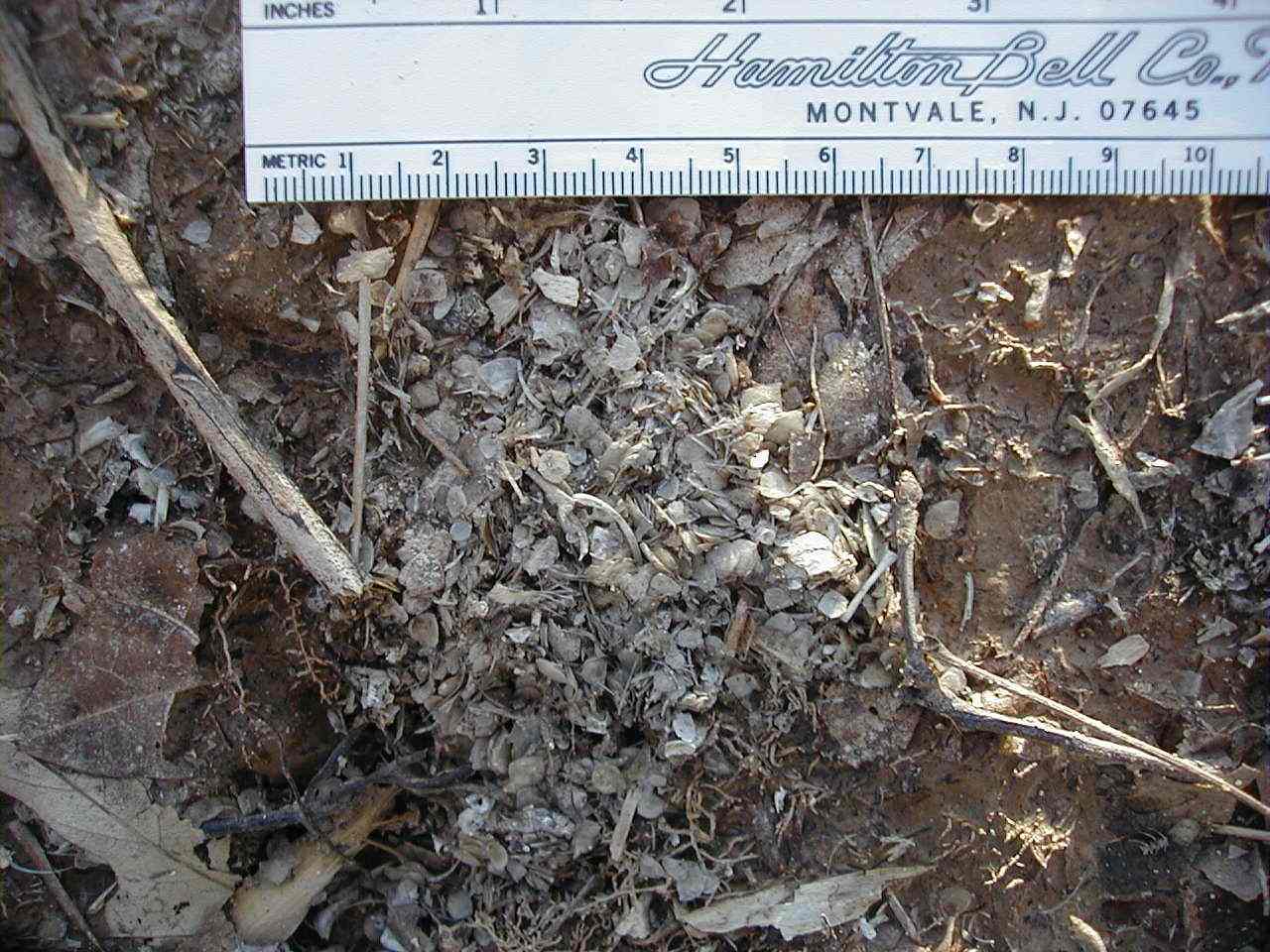
Aged and weathered otter scat, showing more clearly the
fish scales and bones that it is often made up of.
Scat

Fresh northern river otter (Lutra canadensis) scat. It usually includes fish or crayfish and has a greenish tint. |

Aged and weathered otter scat, showing more clearly the fish scales and bones that it is often made up of. |
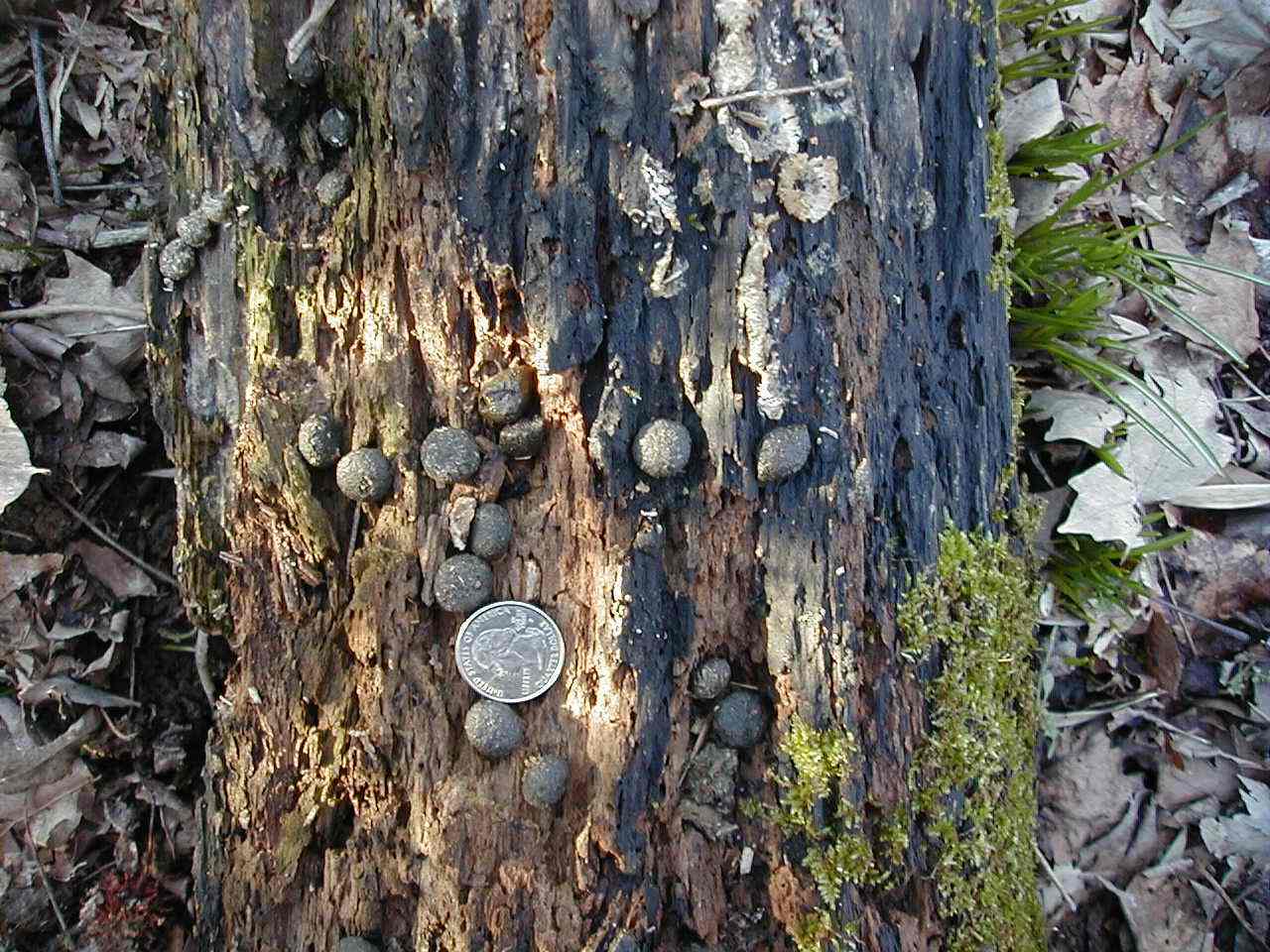
Swamp rabbit (Sylvilagus aquaticus) pellets. Swamp rabbit pellets are typically larger than eastern cottontail pellets, and are usually deposited on a log or mounded clump of grass. |
Buffalo (Bos bison) scat. Notice footprint of unfortunate human in lower left corner. |
Common raccoon (Procyon lotor) scat. Raccoon scat is often found in piles in trees or at the base of trees known as latrines. At certain times of the year it can consist totally of wild black cherry pits, beetle parts, or blackberries. Raccoons are extremely omnivorous. |
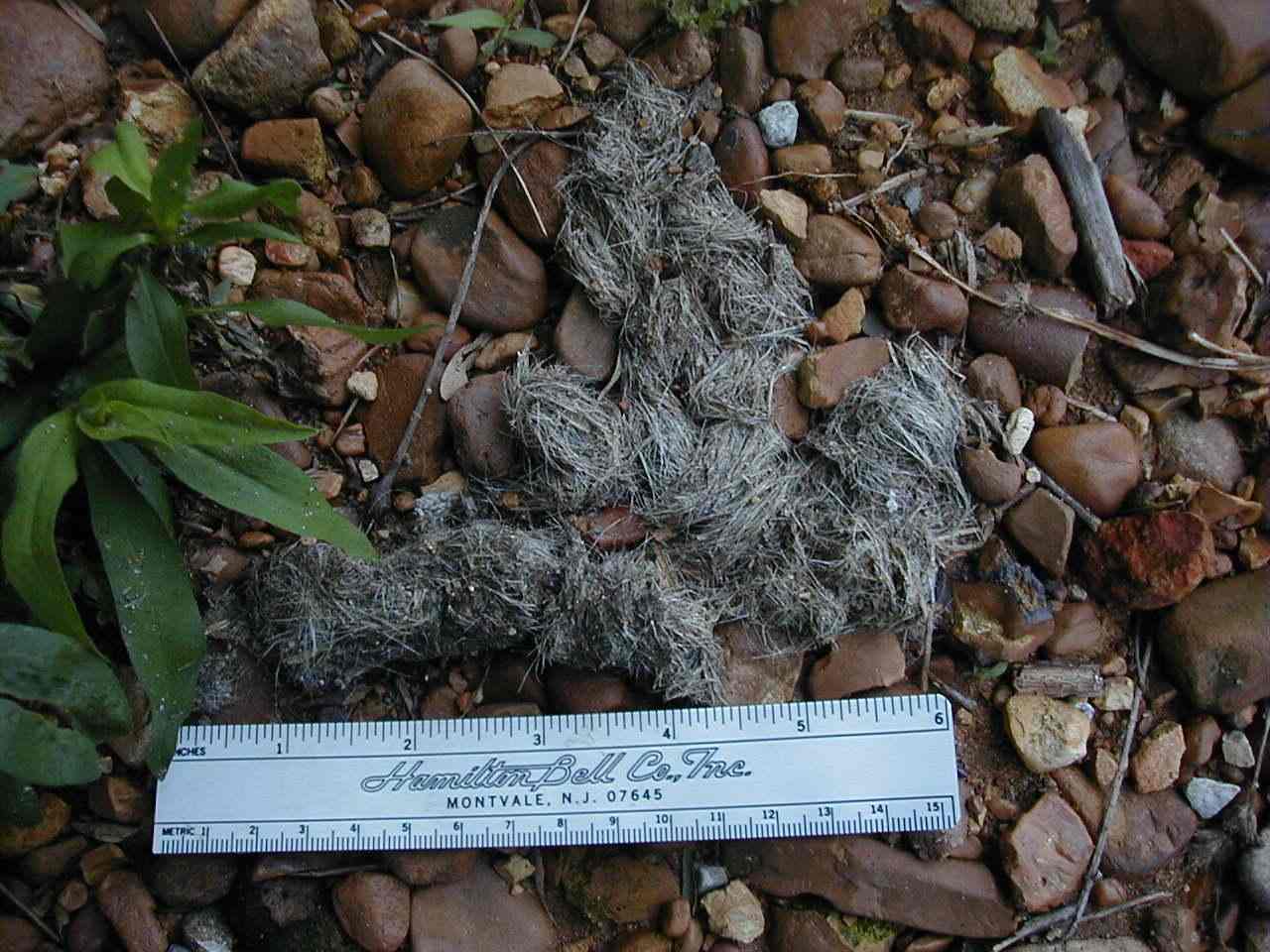
This is an old coyote (Canis latrans) scat. It is made up of mostly rabbit and rodent hair with some beetle parts and gravel also. Generally, scat over 3/4 of an inch in diameter is considered coyote, rather than fox scat. |

This is fresh coyote scat. We can see persimmon seeds in this scat, which demonstrates that coyotes are not always carnivorous. |

This is virginia o'possum (Didelphis virginiana) scat. The identification was made easier by the presence of o'possum tracks in the mud. This scat is very fresh, having been made no earlier than 2 nights before. |
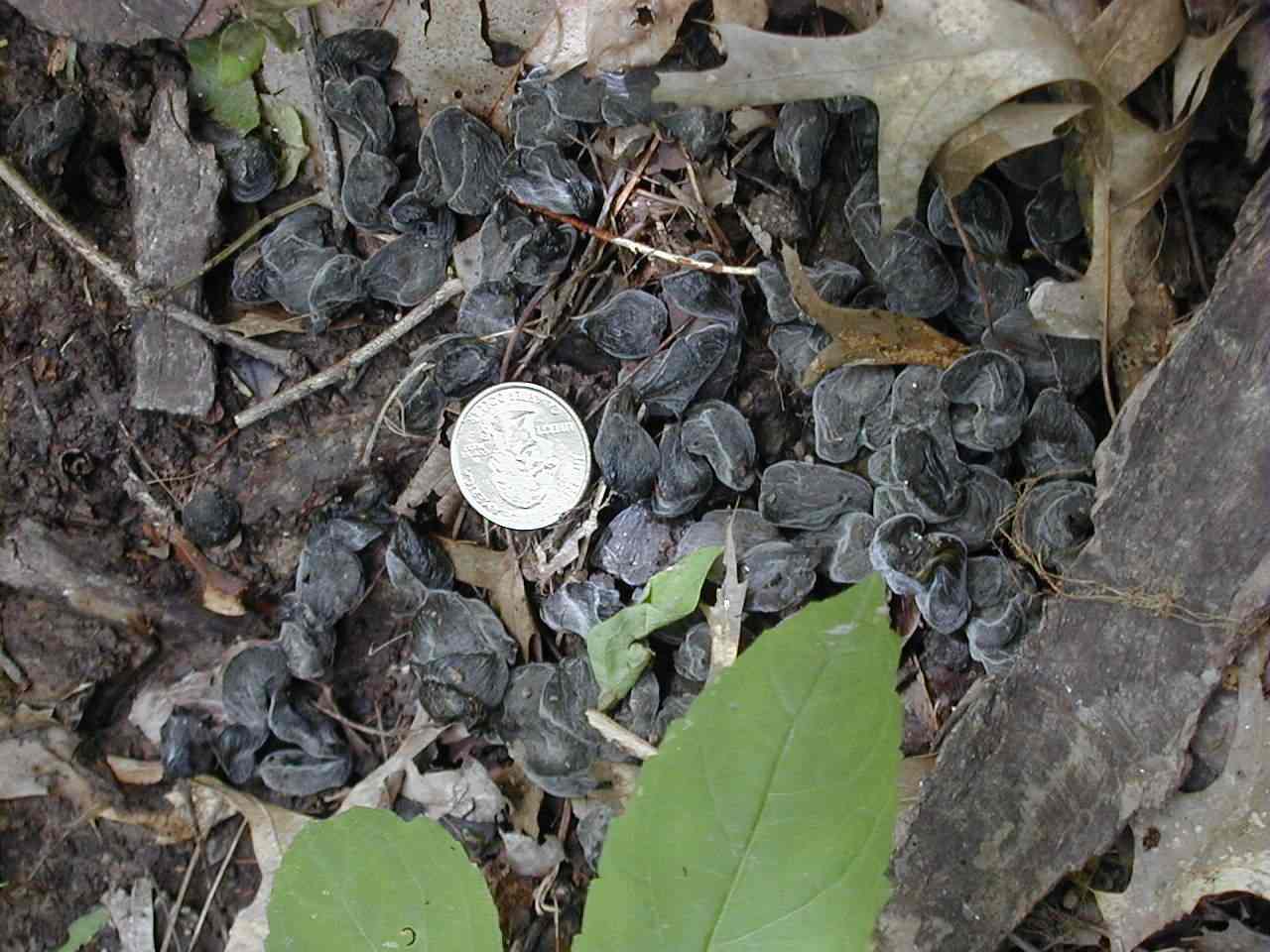
This whitetail deer (Odocoileus virginiana) scat is covered with a white, velvety coat of mildew, indicating that it is a few days old. Deer scat is oblong and dimpled, while rabbit scat is more round, and has a smooth surface (see swamp rabbit scat). In summer, deer and rabbit scats are softer and darker, while in winter they are more fibrous. A quarter is shown for scale. |
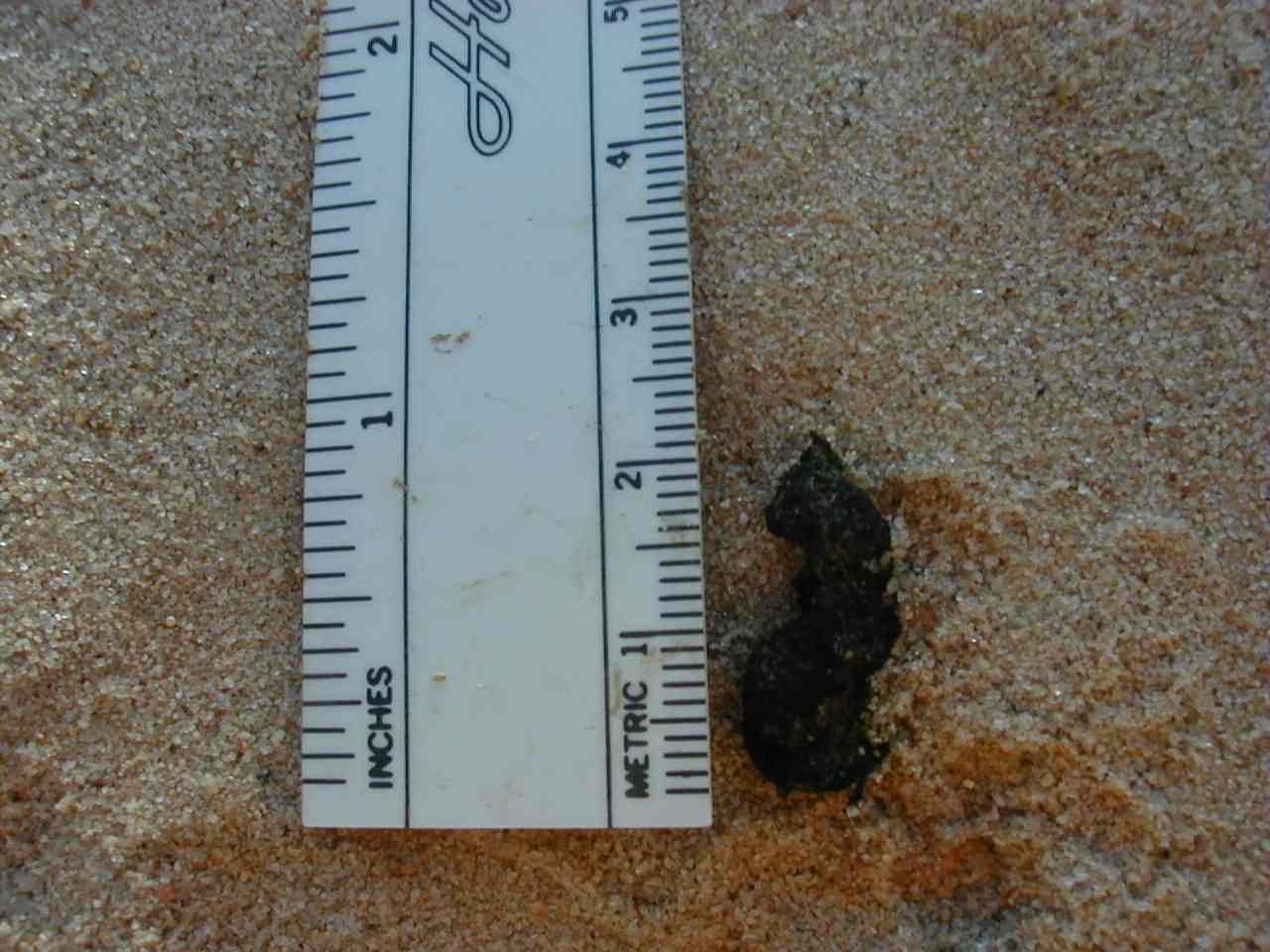
Muskrat (Ondatra zibethicus) scat. Tracks were found here for confirmation. |
| *Produced by Travis Brown 2-22-02 |